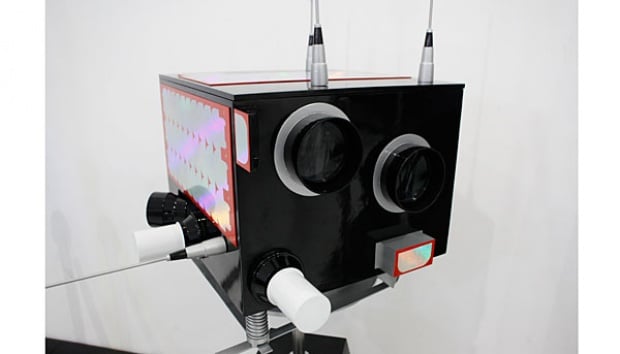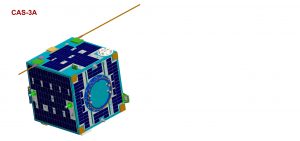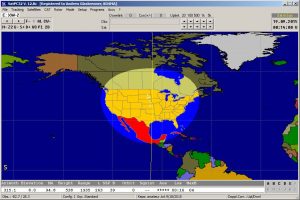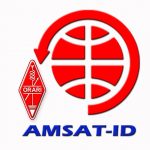 Word has been received, that, in celebration of the UN’s 70th
Word has been received, that, in celebration of the UN’s 70th
anniversary, 4U1UN will be activated as 4U70UN on Saturday 24 and Sunday
25 October. The operation by the UN ARC will be from the ground-level
garden area within the UNHQ complex in New York City and will be limited
to daylight hours. Satellite operation is included in the plans, but
time and equipment limitations will exist. Blockage from high rise
buildings toward the West is expected. Best passes will be to the East
of FN30as and North/South overhead. Possible satellites in view may be
AO-73, FO-29, AO-85, AO-7, SO-50, XW-2E and XW-2F. Note that 4U1UN is a
separate DXCC entity. See QRZ.COM for QSL info.
AMSAT General News
LAPANSAT-A2 to launch 0430UTC 28SEP15 on Indian PSLV-XL C30
Launch Successful and satellite has been heard!
Please send reports to [email protected]
The 76kg LAPANSAT-A2 satellite is scheduled to launch as a secondary payload of the ISRO Astrosat space telescope mission on an Indian PSLV-XL rocket at 0430UTC on 28SEP15. The satellite is expected to be deployed in a low inclination orbit of 6 to 10 degrees, at ~650km altitude. This means stations North or South of approximately 32 degrees of latitude will not be able to access the satellite, but stations near the equator (such as Indonesia) will have up to 14 passes a day.
Along with Maritime AIS monitoring equipment, and optical capabilities, LAPANSAT-A2 carries a V/U voice repeater (435.88 with PL tone up, 145.88 down) and an APRS digipeater (145.825). The telemetry beacon is 437.425 MHz. The operational plan is not known at this time.
Pre-launch Keps courtesy of Dirgan, YE0EEE:
YBSAT
1 99999U 00000 15270.20393519 .00010000 00000-0 10000-3 0 00011
2 99999 006.0383 028.8188 0001450 317.4897 243.6033 14.00000000000018
 Live launch coverage is expected on DD News beginning at 0400Z:
Live launch coverage is expected on DD News beginning at 0400Z:
Doordarshan National News on YouTube
AMSAT-Indonesia has an active group on Facebook:
https://www.facebook.com/groups/831872960241607/
ISRO has a Twitter account at:
CAMSAT XW-2(CAS-3) satellites launch 18SEP2015 2300Z
SUCCESS! A multitude of satellites were heard on the first pass over the US!
Congratulations to CAMSAT and all parties involved!
Latest estimated keps:
http://www.amsat.org/wordpress/amsat/ftp/keps/current/nasa.all
From AMSAT-bb:
The launch postponed by one day due to technical reasons, will be at UTC
23:00:00 on 2015-09-19
Launch time: UTC 23:00:00 2015-09-19
The satellites will be separated from rocket at UTC 23:15:14 2015-09-19
73
Alan, BA1DU
The CAMSAT XW-2(CAS-3) cluster launch of 9 or more amateur radio satellites is  scheduled for 23:00Z on September 18th, 2015, or late afternoon/early evening Friday night in the US. The launch is on the maiden flight of the Long March 6 vehicle, from the Taiyuan launch complex.
scheduled for 23:00Z on September 18th, 2015, or late afternoon/early evening Friday night in the US. The launch is on the maiden flight of the Long March 6 vehicle, from the Taiyuan launch complex.
Satellite separation is planned for 23:15:14 UTC, and the first orbit has the cluster passing over the central US at approximately 00:05Z – 00:23Z  19SEP2015.
19SEP2015.
CAMSAT CEO Alan Kung, BA1DU provided preliminary keplerian elements for the launch via AMSAT-BB:
XW-2
1 99999U 15261.96885740 .00004980 00000-0 28369-3 0 00000
2 99999 097.4712 269.8396 0010382 266.0521 270.6645 15.12847582000010
Frequencies may be referenced from a PDF document also provided by BA1DU. Some satellite frequencies fall outside the international amateur satellite bandplan, so please be aware of local terrestrial users:
See also our previous post at http://www.amsat.org/wordpress/?p=4181
Alan Biddle, WA4SCA created a series of SatPC32 Doppler.sqf file entries for the known satellites. Please be aware that the individual satellite names may differ, and additional modification of the entries may be required to work with future or the above elements.
CAS-3A,145640,0,FM,,,0,Digital TLM
CAS-3A,145660.0,0,USB,,0,CW Beacon
CAS-3A,145675.0,435040.0,USB,LSB,REV,0,0,Transponder
CAS-3B,145705,0,FM,,,0,Digital TLM
CAS-3B,145725.0,0,USB,,0,CW Beacon
CAS-3B,145740.0,435100.0,USB,LSB,REV,0,0,Transponder
CAS-3C,145770,0,FM,,,0,Digital TLM
CAS-3C,145790.0,0,USB,,0,CW Beacon
CAS-3C,145805.0,435160.0,USB,LSB,REV,0,0,Transponder
CAS-3D,145835,0,FM,,,0,Digital TLM
CAS-3D,145855.0,0,USB,,0,CW Beacon
CAS-3D,145870.0,435220.0,USB,LSB,REV,0,0,Transponder
CAS-3E,145890,0,FM,,,0,Digital TLM
CAS-3E,145910.0,0,USB,,0,CW Beacon
CAS-3E,145925.0,435280.0,USB,LSB,REV,0,0,Transponder
CAS-3F,145955,0,FM,,,0,Digital TLM
CAS-3F,145975.0,0,USB,,0,CW Beacon
CAS-3F,145990.0,435340.0,USB,LSB,REV,0,0,Transponder
CAS-3G,145475,0,FM,,,0,Digital TLM
CAS-3G,437950,0,FM,,,0,Digital TLM
CAS-3H,437200.0,0,USB,,0,CW Beacon
CAS-3H,144390.0,144390.0,FM,FM,NOR,0,0,APRS
CAS-3H,437225.0,144350.0,FM,FM,NOR,0,0,FM VOICE
CAS-3I,437000,0,FM,,,0,Digital TLM
Good luck to CAMSAT on the launch, and please send reception reports to [email protected] or #amsat on Twitter.
2015 AMSAT-NA Board of Directors Election Results Announced
As a result of the 2015 Board of Directors election, Barry Baines, WD4ASW; Jerry Buxton, N0JY; Drew Glasbrenner, KO4MA; and Bob McGwier, N4HY; will serve on the board for two years. The First Alternate is Mark Hammond, N8MH and the Second Alternate is Bruce Paige, KK5DO.
The results of the voting with 625 ballots cast are as follows:
Barry Baines, WD4ASW…………475
Jerry Buxton, N0JY………………..417
Drew Glasbrenner, KO4MA………366
Bob McGwier, N4HY………………316
Mark Hammond, N8MH……………289
Bruce Paige, KK5DO……………..198
Steve Coy, K8UD…………………..194
E. Mike McCardel, KC8YLD……….152
Submitted by: Martha Saragovitz , Manager

